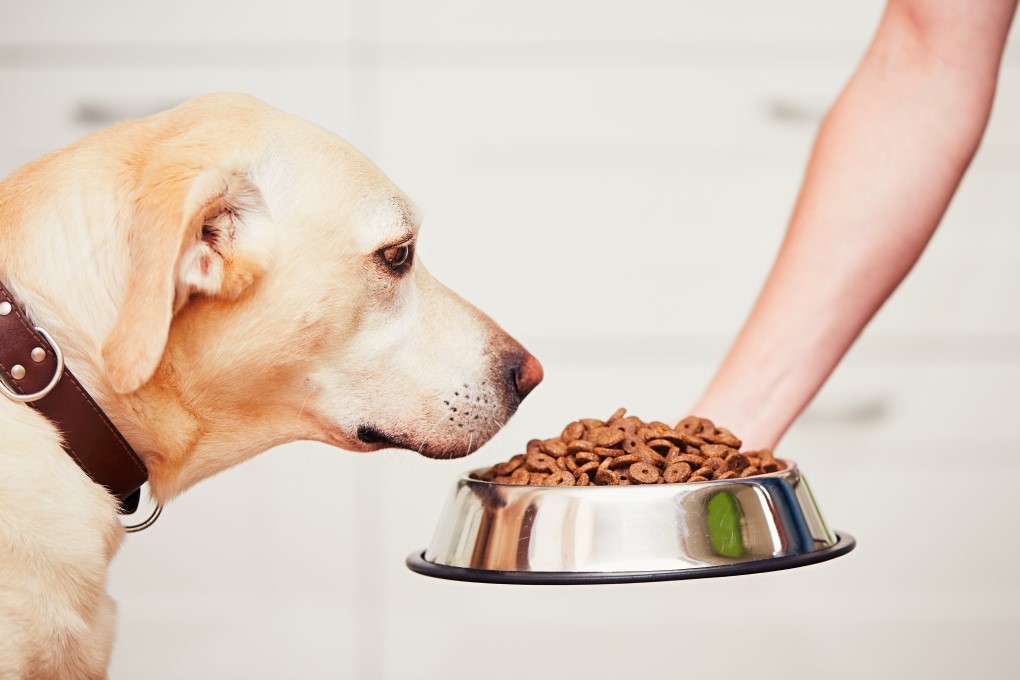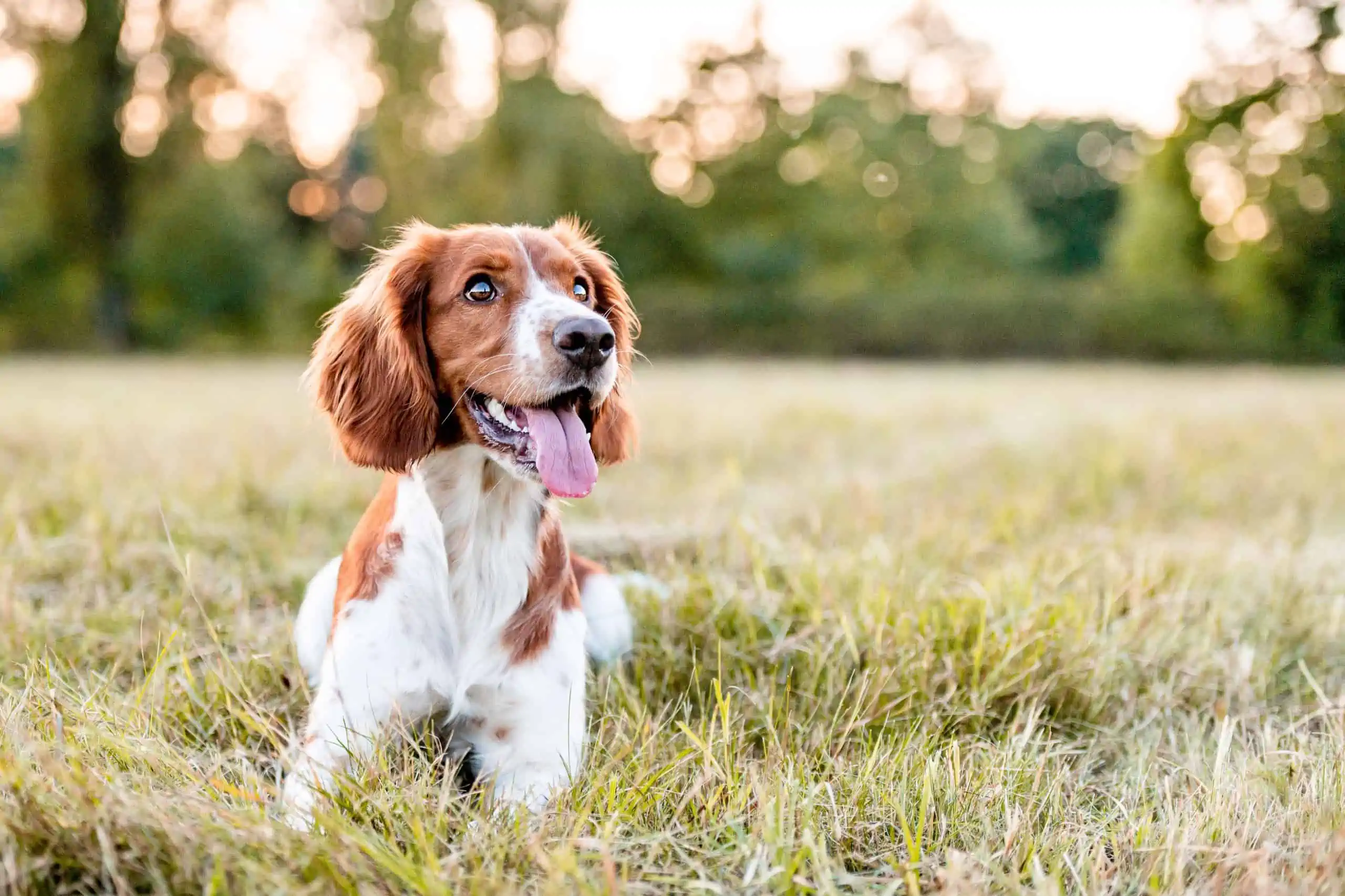Remember those first whirlwind months after bringing home your brand new puppy?
The non-stop jumping up and down, the chasing, the never-ending playtimes.
That boundless energy – thankfully, for us pet parents – doesn’t last forever.
Senior dogs may not move as quickly or as often as they once did.
But that doesn’t mean they shouldn’t still be getting a healthy dose of exercise.
The older our dogs get the more we have to work on ensuring they remain fit and active.
Exercise for senior dogs is essential when it comes to keeping their bodies strong, and their weight under control.
However, creaking joints and ailing health can make it difficult devising suitable workout routines.
Try and keep exercise regular and gentle.
Low stress workouts are ideal as they stop joints from seizing up and don’t put them under too much strain.
Walking is one of the best, and most pleasurable, forms of exercise you and your four-legged friend can enjoy – at any age.
It may be a good idea to choose shorter routes as your pup matures, while factoring in more rest stops. Go at your dog’s pace, and don’t rush them.
If you’re concerned about the weather – older dogs can struggle with very low or very high temperatures – indoor exercise is a great option.
Puzzle toys and games will not only bring them joy and keep them physically sharp, they’re brilliant for brain stimulation, too.
If your dog has been suffering with health issues it is always best to check with your vet to see if their level of activity is appropriate.
5 tips for safely exercising a senior dog
● Don’t just stop all exercise as your dog ages. Joint pain, arthritis, anxiety. These are just some of the issues dogs may have to contend with as they get older. Cutting down on exercise may be necessary for ageing limbs and tiring bodies. However, putting a stop to it completely can lead to a whole raft of health complications. Daily exercise improves blood flow, boosts the immune system, keeps ligaments and muscles strong and flexible, and can help to reduce any pain or inflammation they may be experiencing. On top of that, regular walks, albeit a little shorter, and playtime – no dog is ever too old for playtime – are renowned mood boosters that will help keep them enjoying life to the full. It’s important that as our dogs age we adapt the way we care for them. Maintaining a good level of fitness is paramount for maintaining good quality of life, so ensure exercise remains a priority.
● Be aware of how your dog is reacting to exercise. As humans, we know only too well how it can feel after overexerting ourselves. A long run is often followed by a long soak in the bath, and an even longer stint on the couch. Aching muscles are part and parcel of exercise, but it can be difficult for pet parents to spot the subtle signs of fatigue in dogs. That’s why keeping a close eye on them during and after exercise is important when gauging just how much they should be doing. Muscle soreness and stiffness are common signs of over-exercise, so if they’re struggling to move around or get up, you may want to take things easier. Excessive panting and longer recovery times are another two symptoms you need to be wary of. Also, are they sleeping a lot more, or have you noticed them refusing to go on walks? Sudden changes in behavior can be linked to over-exercise, so be alert.
● Keep your dog in a routine. Exercise plans are a superb way of tracking just how much effort your furry friend is putting in. It also helps keep them in a routine. And dogs love routine. They’re creatures of habits and sudden changes to a daily regime can be extremely detrimental to their physical and mental wellbeing. Consistency is key to ensuring your senior dog remains in the best shape possible. We’d advise short, daily exercises. Pick a couple of times in the day – maybe once before and once after work – and use these periods to focus fully on your dog’s fitness. Even if the walks are shorter, or taking slightly longer due to more breaks, try and stick with the same times each day. They’ll really appreciate this little nugget of familiarity, and it should see them continue to thrive both physically and emotionally even as they age.
● Take regular breaks. It’s sometimes easy to forget that our little bundles of joy are no longer little balls of non-stop energy. While your furry friend may not look much older than the day you welcomed him or her into your home, once they pass the age of seven they’re going to require a bit more care and attention, especially while out walking. A lot of dogs don’t know they own limitations, so can get carried away the second they’re off the lead, pushing it too far when they should be taking it easy. Make sure you plan in lots of stops, and give them enough time to recover before setting off again. It’s also a good idea to carry plenty of water with you as well in order to keep them well hydrated. Even if they don’t show outward signs of being thirsty, offer it to them regularly.
● Consider swimming and alternatives to walking. Swimming is a fantastic alternative to walking if your senior dog is having issues with their joints or maybe recovering from an injury. The water provides an excellent form of resistance with a low impact benefit that will strengthen your senior dog’s physique without putting it under any sort of serious strain. Only let them swim if you are 100% sure it is safe for them to do so. Other alternatives include letting them play in the back yard – not as strenuous as a walk, but at least they’ll be able to stretch their legs while getting lungs full of fresh air. Old dogs can certainly learn new tricks as well, so keeping them entertained by teaching them a few new ones is a fun form of exercise for everyone. Training is also a great way of ensuring that bond between you and your best friend remains as strong as ever.
Diet & exercise for senior dogs
Exercise is essential when it comes to your senior dog’s overall health and wellbeing.
But so is nutrition.
Dog’s eating habits evolve as they mature.
Slower metabolisms, combined with less energy, mean low-calorie diets are a good starting point for older pets especially if obesity is a worry.
Less calories shouldn’t mean less of a focus on a complete and well-balanced diet though.
For dogs to remain active, and physically strong, they need to be eating nutrient-loaded, wholesome foods.
It’s not uncommon for them to lose their appetite in later years either, so we have to be careful mealtime is not only packed full of goodness, but dripping with flavor, too.
After all, a dog with an empty tummy is probably not going to be in the mood for long walks or games of fetch.
Applaws Taste Toppers – our complementary pet food range that is best served alongside your dog’s favorite complete dry dog food – ticks both the taste and health boxes.
These recipes are specially developed with your dog’s happiness in mind.
Taste Toppers come in a variety of flavors and meal choices, and are packed with high-quality proteins, a mealtime must for senior pooches.
Mouthwatering mix-ins include Chicken Breast with White Beans, Peas & Pumpkin in Gravy Pouch, Beef with Liver, Peas & Carrot Terrine Cup or our Chicken Bone Broth with Turmeric & Parsley Pouch.
All huge doggy dine-in favorites that provide high-energy fuel for daily exercise sessions.






